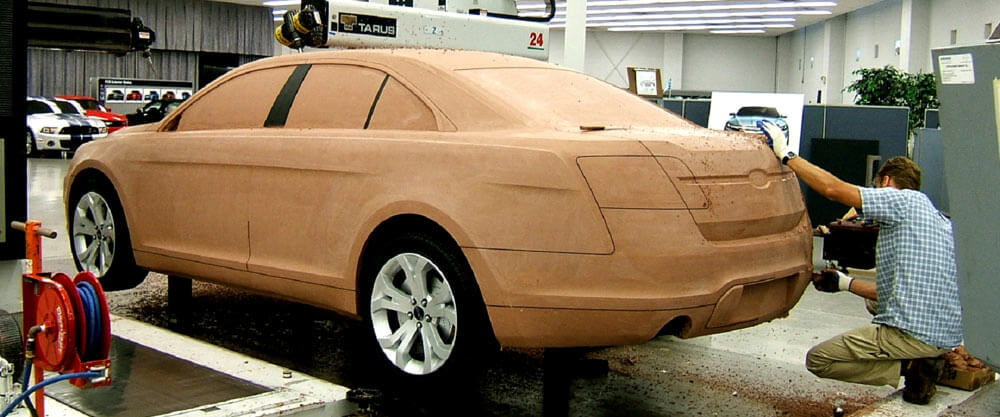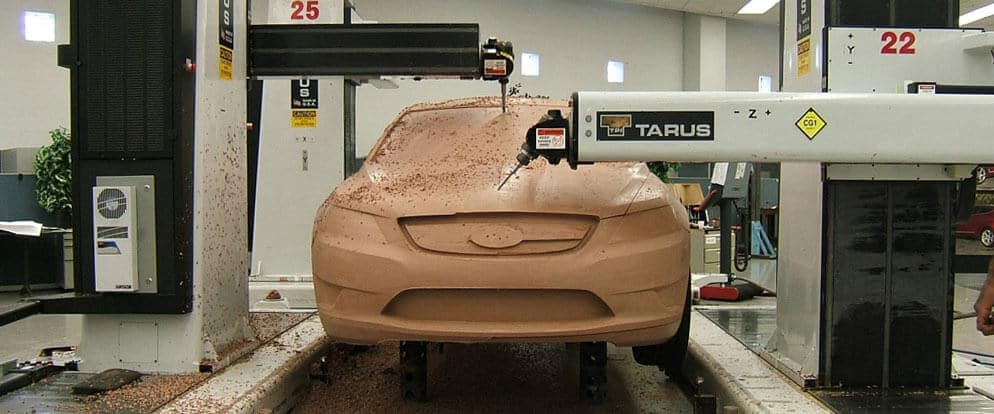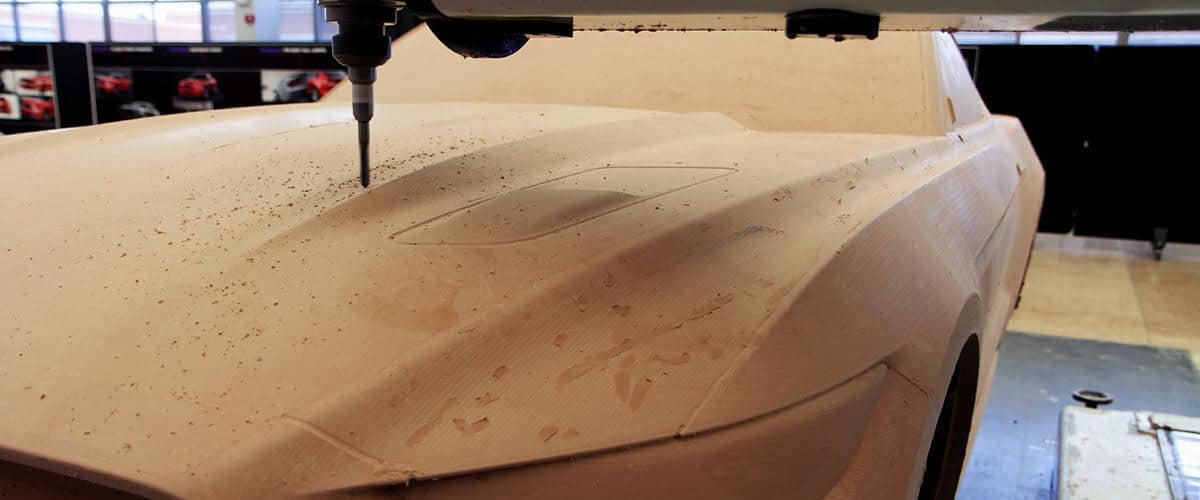
The Human Element of Design
“Old school” modeling methods are often thought to be obsolete when embracing innovation in product development, but this is not always the case. For 80 years, automotive design studios have used clay to create life-size models. It’s a process that has yet to be abandoned because technology is not able to duplicate the nuances and capabilities of the human touch.
Many product development methods have come and gone. Take wood-model making for example. This entire trade was replaced with the introduction of the three and five axis mills. No longer were wood-die models built by the hands of a skilled master but blocks of material were glued together and mounted to a base and sent off to be milled. This new reality really hit home for me. Right out of high school I worked my way up from the foundry, to the plaster model shop, to plastic, and finally to the highly esteemed “top of the food chain” wood model making shop. After only a few years, I found that the artisan trade I respected was gone, along with the skills of my grandfather as a wood pattern maker and the skills of my father as a journeyman wood model maker.
I decided to move on to something that required a higher skill set and yet used the artistic ability that was passed down to me. My father suggested clay modeling. I took his advice and attended Walpro Technical training school in Warren Michigan. It was operated by a couple of retired clay modelers from General Motors. To receive my certification I completed three, 12-week courses. I updated my resume and went to Ford Motor Company’s Design Center and hand delivered it every month for nine months. I finally received a call from Ford, “OK kid— we are going to try you out.” My persistence paid off.
I had a stint in the Thunderbird/Mustang Studio for over a year and then the contract staff was laid off. I scooted over to Mascotech Studios in Dearborn for a few years before being hired directly into Ford Design. I was there for almost 15 years working on many exterior and interior programs including a few concept cars. While there I also obtained an Industrial Design Degree from College for Creative Studies. As I continued to observe various product development processes, I wondered what might become of clay modeling. I noticed something. Even though the benefits of new technologies improved speed and efficiency while reducing costs, clay modeling was still in high demand in automotive. It remains a great way to evaluate styling. Serious investments are not made looking at an image on a screen but by walking around and evaluating a life-size model. Clay modeling adds the human element of design that digital processes just can’t provide.
Digital technology is useful but has it’s limits. Here’s an example. Through the invention of 3D printing, product development departments can quickly visualize a printed part produced in Computer Aided Design (CAD). However, attributes that effect the design are lost from the CAD software to the printed part. The big losses are scale, fit, finish, and proportions plus the small little nuances CAD cannot provide. These parts almost never come off the printer under perfect design intent.
That’s why clay is still useful in the automotive design process. Typically it goes like this. After a new sketch is chosen, the side view is uploaded into CAD and the surface is developed and milled onto a clay model. Then the modelers still have much to do before a typical design review. The entire model is surfaced by hand to remove cutter path marks. Hard parts are fitted. Gaps are cleaned up. Then there’s highlighting. The clay is coated with a film called Di-noc so the surfaces can be analyzed against the lighting in the ceiling to look for defects. It is similar to spotting a small dent in a car with the sun. This task is given to a few select modelers to finish the design that technology just can’t bring home.
This is what’s referred to as adding the human element or putting in the passion. This was the spot I was looking for— the place were talent trumps trained skill and technology. This was where extreme respect was given because of the magic that came from the hands and minds of a select team. Out of the 140 design modeling staff at Ford alone, there were and are only a few dozen in this group. I remember comments from my dad after I had been clay modeling for a while. He said to me, “I don’t know how you do it. Just as soon as you put in a design, management wants to change it. A whole day or multiple days’ worth of work all to be scrapped and started over again”. I would simply say that it was the nature of the job and the beauty of working with clay.
Using a variety of product development methods can help complete the picture and bring about great results. Even though CAD, 3D printing, and other technologies are vital to product development with improved efficiency and competitiveness, I do not see a time when humans are hands off. When it comes to world-class design and innovation, especially when millions of dollars are at stake, nothing can fully replace the human touch.
Written By: Todd Kauranen | Industrial Designer
Todd’s sweet spot is working on the conceptual, fuzzy, front-end of world-class products. With over 33 years of product development experience, Todd’s a wonderful resource. Todd studied clay modeling & drafting at Walpro Technical and has a BFA in Industrial Design from The College for Creative Studies. Camping with family in his vintage Airstream trailer is Todd’s favorite pastime along with building custom furniture, sculpture, and cooking.
Written By:

Todd Kauranen
Industrial Designer
DISHER Newsletter
Sign up to receive articles and insights, delivered monthly.
Schedule a no-committment project call
Reach out to discuss your project to find out if DISHER could be a good fit for you.



